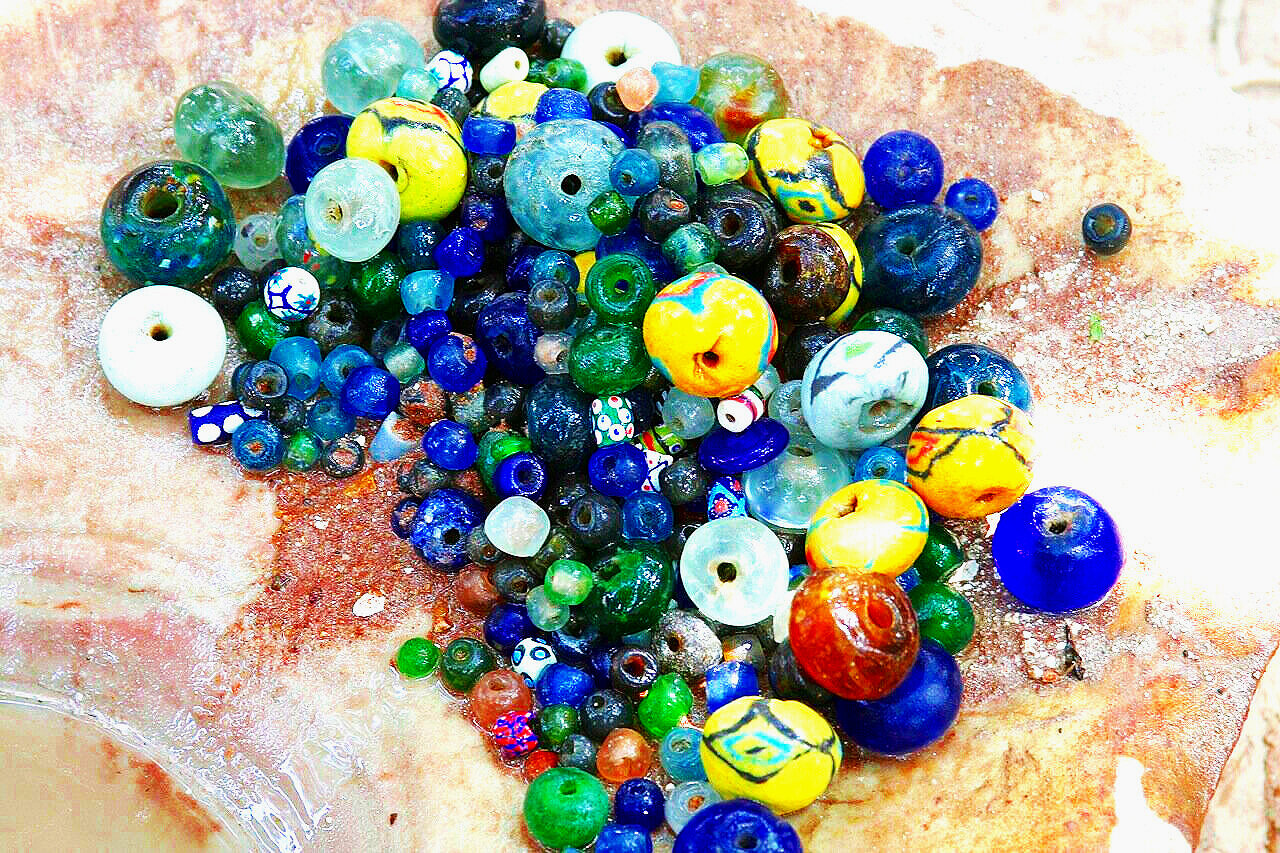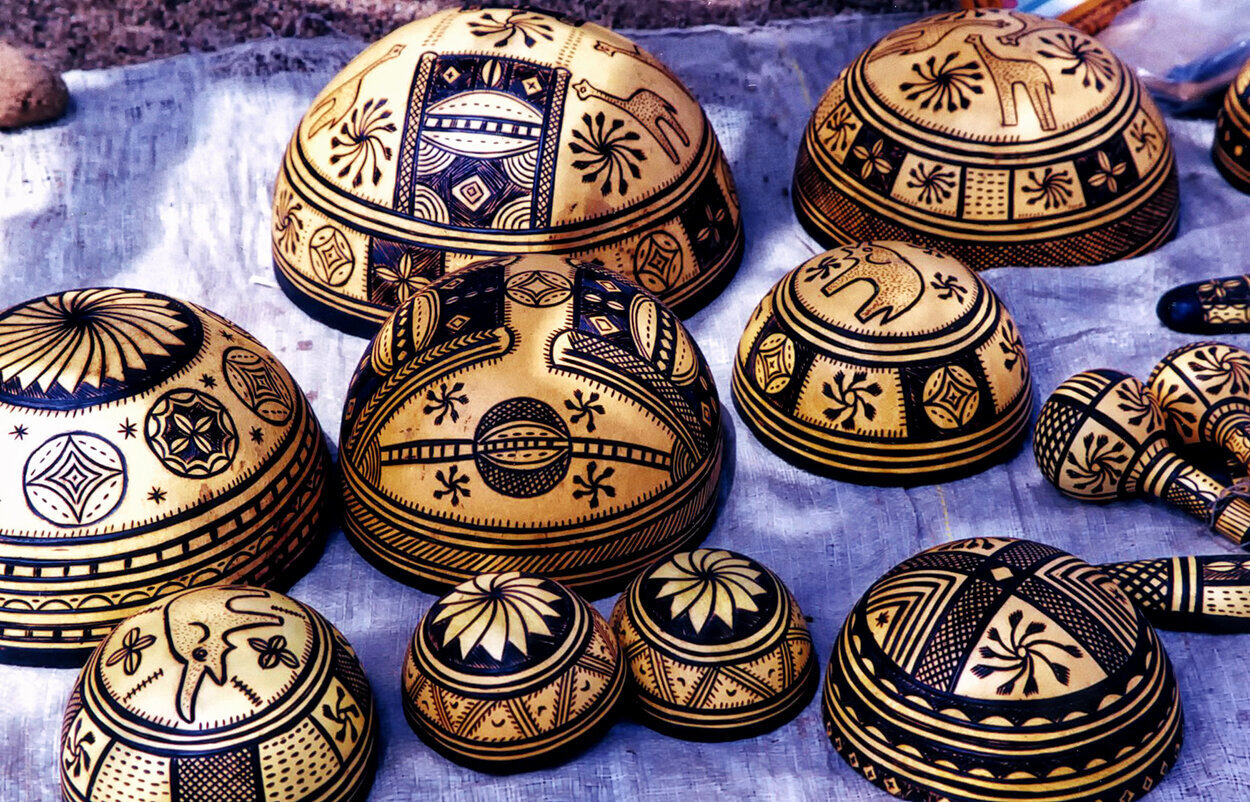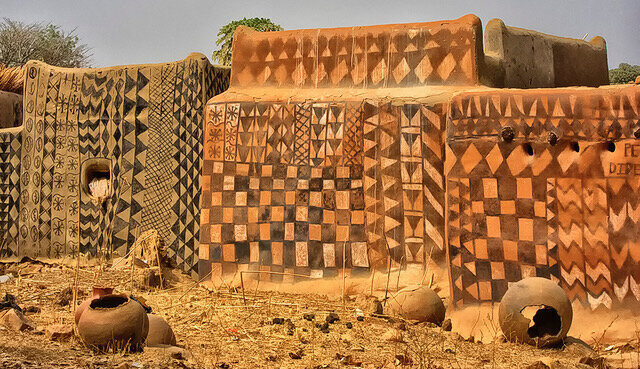
West African Mud Cloth
Mud cloth artisan Pama Sinatoa, Djenne, Mali
Making mud cloth
To create the mud cloth, Pama Sinatoa purchased narrow cotton strips hand-woven by men. Cotton threads can be hand-spun or from commercial cotton, although hand-spun is preferred. These strips are washed and dried in the sun to allow for shrinkage. Then the very soft strips are sewn together to create a large rectangular piece, which is then soaked in water steeped in the leaves of the Wolo bush, which creates tannic acid. This becomes a mordant to accept and hold color easily to produce a deep ochre color. Finally, it’s time to create the design with black iron-rich mud sourced from ponds or from the Niger or Bani Rivers, which has been collected and stored in clay pots for up to one year.
Cotton strips are sewn together to create a large rectangular piece, which is soaked in water steeped in the leaves of the Wolo bush
Making the designs
Using a bamboo stick frayed at one end, Pama or her son paints a mud design onto the surface of the cloth, where it reacts with the tannic acid in the cloth. The mud appears gray at this point, but the residue turns black when the mud is rinsed off. The Sinatoas repeat this process again and again, so that the image will be a deep color-fast black. The rest of the cloth is yellow, which is covered with a locally produced caustic bleach, and then dried and rinsed to restore the negative areas to a natural white color. A rust color is created by adding the boiled bark of the wild vine (n’beku).
Using a bamboo stick frayed at one end, Pama Sinatoa’s son paints a mud design onto the surface of the cloth where it reacts with the tannic acid in the cloth
Locally produced caustic bleach applied to restore a natural white color
Pama Sinatoa, mud cloth master artisan
Patterns and their meanings
Pama’s repeat pattern designs have many themes, but generally they reflect life activities like planting and pounding millet, with long rows of storage huts topped with circular thatched roofs and masked ceremonial dances. These are scenes she remembers from growing up in Mopti, along the Niger River. Motifs of animals like crocodiles, camels, birds, and scorpions, symbols of power, grace her pieces. Just looking at her joyful textiles in my home makes me smile!
Artist: Pama Sintoa













